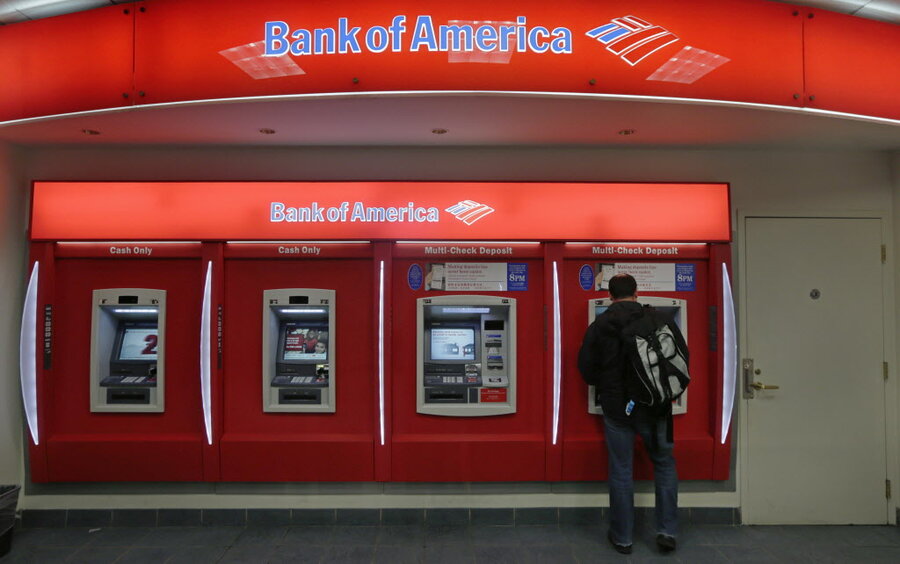Eight ways to avoid ATM fees
Loading...
That little fee tacked onto your withdrawal when you use an automatic teller machine outside your bank network is not only annoying — it's a terrible financial move. Just a few dollars might seem insignificant at the time, but what you may not think about is that ATM fees can make up an obscenely high percentage of the money you're withdrawing. For instance, if you are taking out $50 and you pay a $2.50 fee to the bank whose machine you are using, plus a $2 fee to your own bank, you just paid an additional 9% to access your own money. You wouldn't take out a mortgage at that rate, so don't pay that rate for your own cash!
My husband used to be a serial out-of-network ATM user. I formulated this list of tips to help him avoid the insidious habit.
1. Fill Up at 50%
Just like driving mountain roads with the empty tank light blazing, walking around town with an empty wallet is tempting fate. Set an optimal amount of cash to carry at all times — say, $50 — and when your wallet dips below $25, plan a stop at your bank's ATM to refill.
If you tend to spend cash just because it's in your wallet, be craftier about your emergency reserve. Keep it in your car glove compartment, zipped into an inside pocket of your jacket, or in some other out-of-sight place. And if you don't like stopping at the bank when your backup runs out, keep a backup backup, like a drawer at home with $100 for replenishing.
2. Carry a Checkbook
Sure, it's super dorky to have to ask an establishment if they'll take a check. But it's better than paying high rates to access your own money. Stash a checkbook in your bag or the glove compartment.
3. Get Cash Back Instead
This is my favorite move in a cash emergency: I stop in a drugstore or grocery store, make a purchase, pay with my debit card, and ask for cash back, which is usually provided with no fee. I try to pick up something I needed anyway — say, envelopes. But even if I just buy myself a small treat, like a candy bar, as long as it's under $2, I still come out ahead.
4. Check Your Bank's Online Location Finder
Just because you're in an unfamiliar area doesn't mean you have to go to the first ATM you see. If you use a large bank, and you need cash while traveling, a few clicks can let you know where the nearest in-network cash machine is.
5. Find Out if Your Bank Has Partners
One reason I have kept my checking account with Citi through several moves is that they have a deal with 7-Eleven, so that I can use the machines inside the stores without paying a fee.
6. Change Banks or Get an Additional Checking Account
If your current bank lacks ATMs near your work or home, maybe it's time for a switch. You could pick a bank that has ATMs convenient to you, or choose one of the institutions that reimburses you for other banks' fees so that you can use any ATM for free. A lot of online-only banks do this. But read the fine print: Many require you to maintain a minimum balance or meet other criteria in order to get the fees reimbursed.
7. Do Your Homework Before Traveling Abroad
If you thought a few dollars in out-of-network fees were bad, wait until you get back from a European vacation and read your bank statement. You will probably find an international transaction fee and possibly also a currency exchange fee tacked on — in addition to the normal fees from your bank and the bank that owns the ATM. Ouch.
Before leaving on a trip, you can open a checking account with one of the rare banks that reimburses these foreign fees.
8. Don't Be Shy About Your Predicament
My husband is a lot better about avoiding ATM fees now, but when he pays one, it's often because he was meeting a friend at a cash-only establishment and was too embarrassed to make the friend wait while he solved his cash problem. I say, let friends know that you don't want to pay an ATM fee. Borrow the $10 you need from your friend and pay him back tomorrow, or PayPal or Venmo him the money on the spot, or just ask to switch to the restaurant next door that accepts credit cards. After all, if you raise your friend's ATM fee awareness, you'll be doing him a favor in the long run.
This article is from Carrie Kirby of Wise Bread, an award-winning personal finance and credit card comparison website. This article first appeared at Wise Bread.







